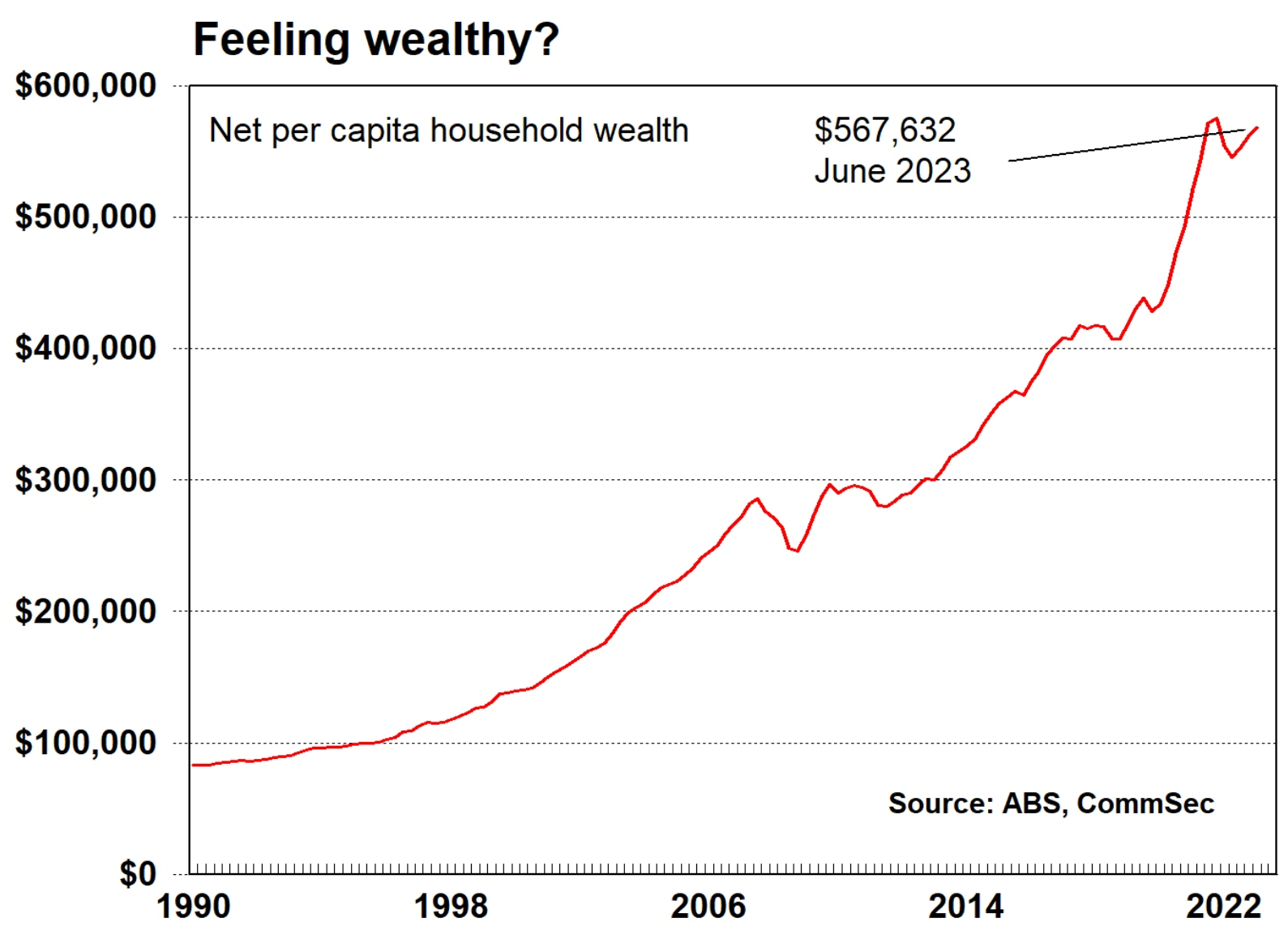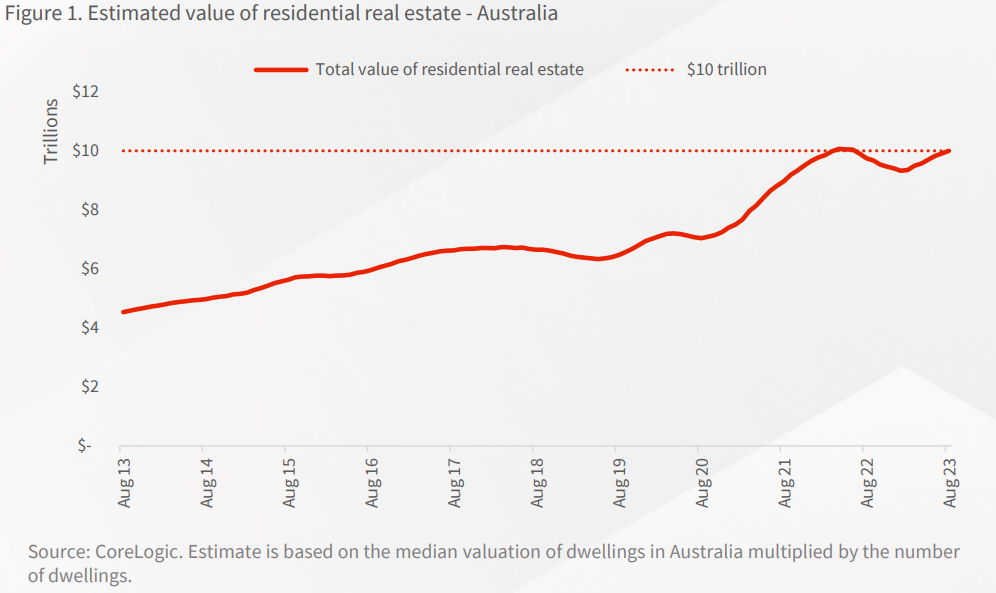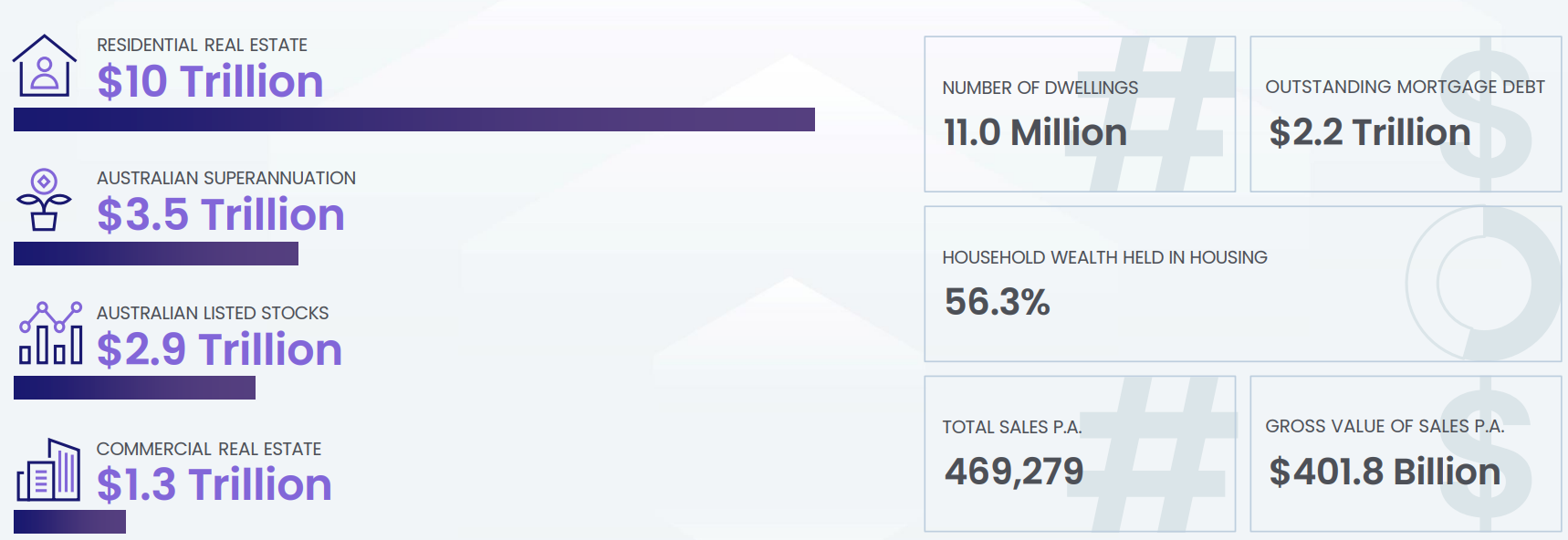CommSec posted the below chart on Twitter showing how Australian per capita wealth has rebounded toward last year’s peak:

The average Australian was worth $567,632 in June 2023, according to the Australian Bureau of Statistics (ABS).
The rebound in household wealth has obviously been driven by the similar rebound in home values.
As shown in the next chart from CoreLogic, the total value of Australia’s housing stock climbed back to its peak of $10 trillion dollars in August:

Moreover, housing now accounts for 56.3% of Australians’ household wealth, according to CoreLogic:

The above data helps explain why Australians are frequently listed among the world’s wealthiest people.
Although I would argue that having one of the most expensive housing markets in the world is a curse rather than a blessing.
Expensive housing punishes individuals who have recently or are about to enter the property market. They are either condemned to a life of debt slavery repaying mega-mortgages, or they are excluded entirely, forced to rent for life.
Would Australia be worse off if the median home price was $365,000 rather than $735,000, mortgage debt was 70% of disposable income rather than 140%, and the banking sector was smaller and less profitable?
The answer is emphatically no. Cheaper debt loads would assist Australian households, while the broader economy would gain from the productivity-boosting benefits of cheaper land costs, higher business lending (investment), and an overall more balanced economy.
We all need a place to live. And by creating the housing Hunger Games, we have deprived our young of a housing future.

